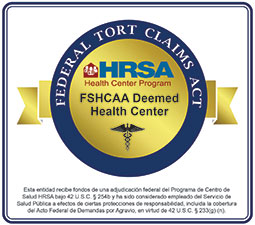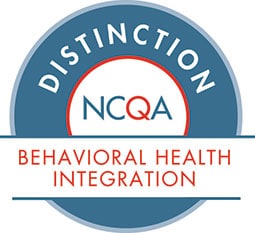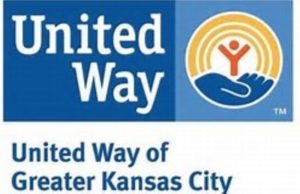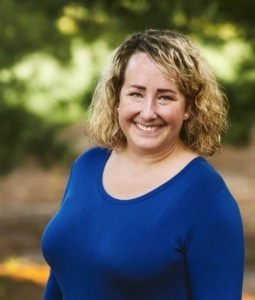 Written by Gretchen Wells, MSW, LCSW, LSCSW, Behavioral Health Clinician, Health Partnership Clinic
Written by Gretchen Wells, MSW, LCSW, LSCSW, Behavioral Health Clinician, Health Partnership Clinic
Mental illness occurs in people of all ethnicities, races, national origins, sexual orientations, and gender identities, as well as other cultural identities. Any of us may experience distress related to mental health concerns, irrespective of our background. However, those from diverse cultural groups (such as Black/African American; American Indian/Alaska Native; Hispanic/Latinx; Asian American, Pacific Islander, and Native Hawaiian; and LGBTQIA+ communities) often experience inequities related to their behavioral health treatment, support, and quality of care.
According to Substance Abuse and Mental Health Service Administration (SAMHSA), racial and ethnic minority groups are less likely to have access to appropriate mental health services, more likely to utilize hospital emergency departments for mental health needs, and, as a whole, appear to have poorer mental health outcomes.
In order to improve access to mental health treatment and promote public awareness of needs and concerns related to mental illness for diverse populations, Congress formally recognized Bebe Moore Campbell National Minority Mental Health Awareness Month on June 2, 2008. This is in memory of Bebe Moore Campbell, an American author, journalist, teacher, and mental health activist, who labored diligently to bring awareness to the mental health needs of the Black community and other diverse populations. Campbell advocated tirelessly for her daughter, who struggled with both mental illness and a system that seemed to keep her from receiving proper treatment and support. She founded the Inglewood chapter of National Alliance on Mental Illness (NAMI) in a primarily Black neighborhood to establish a secure place for Black individuals to discuss mental health concerns. Campbell sadly lost her battle with cancer in 2006, but her legacy in the mental health advocacy field lives on.
“While everyone – all colors – everyone is affected by stigma – no one wants to say ‘I’m not in control of my mind.’ No one wants to say, ‘The person I love is not in control of [their] mind.’ But people of color really don’t want to say it because we already feel stigmatized by virtue of skin color or eye shape or accent and we don’t want any more reasons for anyone to say, ‘You’re not good enough.'”
– Bebe Moore Campbell
Minority Mental Health
 NAMI has adopted the message of “Together for Mental Health” for 2022’s Bebe Moore Campbell National Minority Mental Health Awareness Month this July. Together, we can realize our shared vision of a nation where anyone affected by mental illness, regardless of their background, culture, ethnicity or identity, can receive the appropriate support and quality of care to live healthy, fulfilling lives.
NAMI has adopted the message of “Together for Mental Health” for 2022’s Bebe Moore Campbell National Minority Mental Health Awareness Month this July. Together, we can realize our shared vision of a nation where anyone affected by mental illness, regardless of their background, culture, ethnicity or identity, can receive the appropriate support and quality of care to live healthy, fulfilling lives.
The entire mental health system in the U.S. needs drastic improvement, including when it comes to serving diverse populations. The following are just a few examples of barriers that these communities are often forced to deal with when attempting to access care:
- Language difficulties
- A system with little or no cultural consideration
- Racism, bias, and discrimination in treatment settings
- Reduced quality of care
- Less likelihood of health care coverage
- Stigma from numerous directions (for being part of a marginalized community and for struggling with mental illness), etc.
“What Can I Do”?
Below is a list of ways that you can help ignite change related to the mental health of underrepresented communities:
- Consider giving a presentation or starting a conversation about mental illness in your community – Check out the NAMI website for sample presentations that you can use, such as Sharing Hope for Black communities and Compartiendo Esperanza for Hispanic/Latinx communities.
- Emphasize the importance of a culturally competent provider, one who values the integration of patients’ beliefs and values into their treatment.
- Advocate – Call, write, e-mail, or otherwise start a dialogue about mental health awareness with your legislators, both state- and nation-wide.
- Share your story or experience related to mental illness – But only if you feel comfortable doing so. There are story-sharing platforms like Ok2Talk and You Are Not Alone if you’re ever feeling isolated or that your community does not understand mental illness.
- Join a virtual or in-person mental health advocacy walk to raise awareness and fight the stigma (such as NAMI Walks, PRO-ACT Recovery Walks, AFSP Out of the Darkness, Speak Up: Break the Silence, etc.)
- Donate money to or volunteer with a local cause that focuses on mental illness awareness and de-stigmatization efforts.
- If you are a health professional, you can continue your cultural competency education via resources such as U.S. Department of Health & Human Services: Think Cultural Health.
At HPC, we strive to practice cultural humility and cultural competence in an integrated setting.
We have staff who are multicultural, multilingual, and trained in and dedicated to providing quality care to the patients we serve. We encourage staff members to build on their natural curiosity, continue their education, and collaborate with patients on plans of care that are culturally sensitive.
The Behavioral Health Team at HPC invites you to celebrate Minority Mental Health Month this July. Please join our efforts to bring our voices together to advocate for mental health and access to care for all.
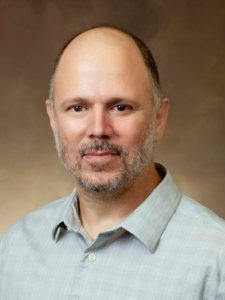 By John Smart, LSCSW, Behavioral Health Clinician
By John Smart, LSCSW, Behavioral Health Clinician 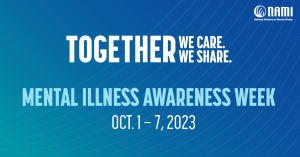 Mental illness awareness can be effectively approached on an individual and family level through considering the factors that contribute to our overall mental health, and remembering that mental health depends on many variables: addressing physical health needs, avoiding addictive substances, connecting with others in mutually supportive ways (this can include friends, family, volunteer work, spiritual support and pets), balancing needs for daily rest and activity and practicing mindfulness of our overall well-being. Mental illness awareness also includes advocacy and education. NAMI has a variety of tools and resources to support advocacy and education. NAMI and several other mental health advocacy organizations also provide connection to local support groups.
Mental illness awareness can be effectively approached on an individual and family level through considering the factors that contribute to our overall mental health, and remembering that mental health depends on many variables: addressing physical health needs, avoiding addictive substances, connecting with others in mutually supportive ways (this can include friends, family, volunteer work, spiritual support and pets), balancing needs for daily rest and activity and practicing mindfulness of our overall well-being. Mental illness awareness also includes advocacy and education. NAMI has a variety of tools and resources to support advocacy and education. NAMI and several other mental health advocacy organizations also provide connection to local support groups.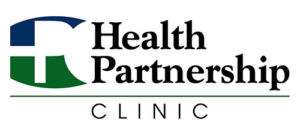
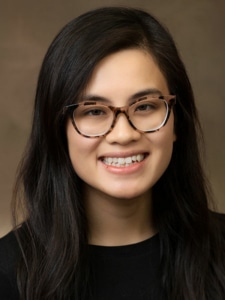 By
By  Call 911 for emergency services.
Call 911 for emergency services. By
By  I had a mentor tell me once that the best evidence of a changed life is a changed life. It is a simple statement but really difficult to complete. So many of us will change the one thing that we think is holding us back. Whether it is cutting the carbs, stopping that afternoon Diet Coke, or not driving past the liquor store on the way home. These small changes can lead to successes which can lead to more success and momentum of change. Thus, we become better at practicing our change and our process.
I had a mentor tell me once that the best evidence of a changed life is a changed life. It is a simple statement but really difficult to complete. So many of us will change the one thing that we think is holding us back. Whether it is cutting the carbs, stopping that afternoon Diet Coke, or not driving past the liquor store on the way home. These small changes can lead to successes which can lead to more success and momentum of change. Thus, we become better at practicing our change and our process.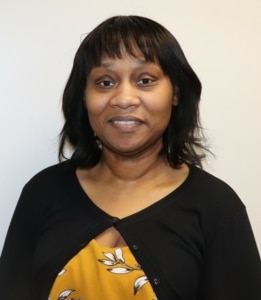 By Ming Strother, LSCSW, Behavioral Health Clinician
By Ming Strother, LSCSW, Behavioral Health Clinician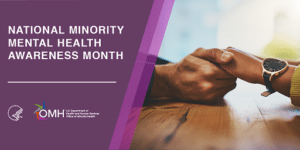 People from ethnic minority groups are less likely to seek mental healthcare than their white counterparts for a multitude of reasons. There remains a general mistrust of the healthcare system among these groups. Other reasons for consideration include poverty, lack of access, lack of proper health insurance, provider discrimination, stigma and cost.
People from ethnic minority groups are less likely to seek mental healthcare than their white counterparts for a multitude of reasons. There remains a general mistrust of the healthcare system among these groups. Other reasons for consideration include poverty, lack of access, lack of proper health insurance, provider discrimination, stigma and cost.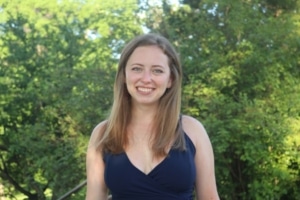 By Ilexa Axelrod
By Ilexa Axelrod Health Partnership Clinic is committed to serving all individuals, including those who are neurodivergent or have ASD. If you are seeking assistance for yourself or a loved one regarding locating support or services for autism, you can make an appointment with a physician by calling 913-648-2266. Alternatively, you may ask to schedule with our Behavioral Health team.
Health Partnership Clinic is committed to serving all individuals, including those who are neurodivergent or have ASD. If you are seeking assistance for yourself or a loved one regarding locating support or services for autism, you can make an appointment with a physician by calling 913-648-2266. Alternatively, you may ask to schedule with our Behavioral Health team.
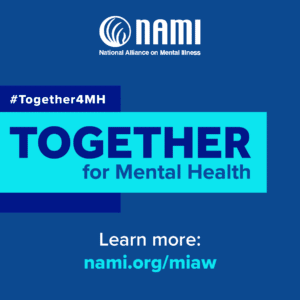 The National Alliance on Mental Illness (NAMI) provides
The National Alliance on Mental Illness (NAMI) provides 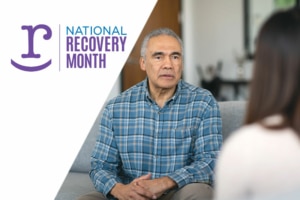 In recovery, some of us leave broken clocks on the wall. We have persons, places and playthings around us that don’t work all the time. We have things on the walls of our life that we don’t need any more or that don’t benefit our recovery.
In recovery, some of us leave broken clocks on the wall. We have persons, places and playthings around us that don’t work all the time. We have things on the walls of our life that we don’t need any more or that don’t benefit our recovery. My recovery work is to take down the clock and work on it, to see what is defective about it. Is it the gear box? Does it need a battery… or is it beyond repair? Just like in treatment, we examine it. In this case, the clock in the office was beyond repair, so I had to take it down and find a new place for it, right? No, I had to separate myself from the clock, put it in the trash and move on. Much is the same with recovery, examining why I don’t need the broken things of my past to be hanging on the walls of my life for all to see is a deep and difficult path. But once the old clock is gone and a new one is in place, my soul feels renewed… Open to new adventures where I don’t have to explain the broken clock on the wall.
My recovery work is to take down the clock and work on it, to see what is defective about it. Is it the gear box? Does it need a battery… or is it beyond repair? Just like in treatment, we examine it. In this case, the clock in the office was beyond repair, so I had to take it down and find a new place for it, right? No, I had to separate myself from the clock, put it in the trash and move on. Much is the same with recovery, examining why I don’t need the broken things of my past to be hanging on the walls of my life for all to see is a deep and difficult path. But once the old clock is gone and a new one is in place, my soul feels renewed… Open to new adventures where I don’t have to explain the broken clock on the wall. Written by Gretchen Wells, MSW, LCSW, LSCSW, Behavioral Health Clinician, Health Partnership Clinic
Written by Gretchen Wells, MSW, LCSW, LSCSW, Behavioral Health Clinician, Health Partnership Clinic NAMI has adopted the message of “Together for Mental Health” for 2022’s Bebe Moore Campbell National Minority Mental Health Awareness Month this July. Together, we can realize our shared vision of a nation where anyone affected by mental illness, regardless of their background, culture, ethnicity or identity, can receive the appropriate support and quality of care to live healthy, fulfilling lives.
NAMI has adopted the message of “Together for Mental Health” for 2022’s Bebe Moore Campbell National Minority Mental Health Awareness Month this July. Together, we can realize our shared vision of a nation where anyone affected by mental illness, regardless of their background, culture, ethnicity or identity, can receive the appropriate support and quality of care to live healthy, fulfilling lives.
